Experimental Neurooncology

Prof. Dr. Frank Winkler
Our group is interested in clinically relevant, but also basic questions in cancer research, focussing on mechanisms of tumor growth in the brain, and how the nervous system stimulates it in the brain and beyond. An overarching topic of our research is "Cancer Neuroscience", a rapidly evolving field of research.
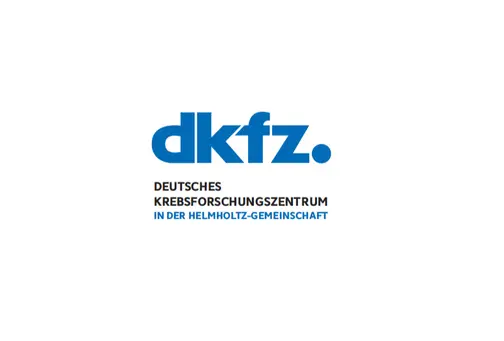
Our research
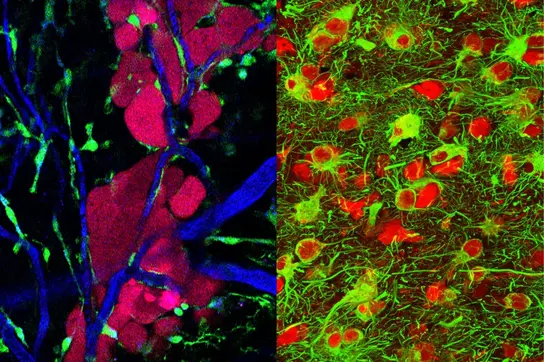
Our traditional focus lies on incurable gliomas, including glioblastoma, and brain metastasis, but extends to other cancer entities now. To optimally study (brain) tumor initiation and progression, we have refined animal models using in vivo two-photon microscopy in our DKFZ lab to study brain cancer cell populations and their dynamic behavior over many months, including their cellular components, gene expression, blood vessels, glia cells, neurons, intercellular communications, and important physiological and therapeutical parameters. This unique approach makes it possible to investigate dynamic interactions of cells, associated molecular alterations, and the key mechanisms of tumor progression and resistance in a live organism over long periods of time in high resolution. Moreover, with the addition of novel optogenetic tools, we can now study how interactions with the complex multicellular system that makes a tumor influence key factors of (brain) tumor biology. Most relevant findings include the discovery of communicating tumor cell networks; hijacking of neurodevelopmental pathways for glioma progression; and key steps of brain metastasis formation. All in all, by combing these unprecedented insights into brain tumor biology and resistance with patient data and state-of-the-art molecular diagnostics, we aim to provide a framework for a better understanding of the central traits of malignancy of these challenging diseases, with the ultimate aim to develop novel therapeutic concepts.
Social media: winklerlab.bsky.social (BlueSky) and @Winkler_Lab (X)
Projects
The role of tumor microtubes (TMs) in brain tumor progression and the neurobiology of malignant glioma (Subgroup leader: Dr. Sophie Heuer (née Weil), Scientists: Dr. Salma Baig, Dr. David Hausmann, Dr. Miriam Ratliff): We discovered that ultra-long and thin membrane extensions of tumor cells from incurable gliomas (including glioblastomas) which resemble neurites during neurodevelopment are highly relevant for tumor progression and resistance to therapies (Osswald et al., Nature 2015). The resulting multicellular tumor network allows intensive intercellular communication, and better cellular homeostasis, which results in resistance to radiotherapy and chemotherapy. The communicating tumor cell network is even able to repair itself, which is one mechanism of regrowth after surgical resection (Weil, Neuro Oncol 2017). So far, two neurodevelopmental molecular drivers of TM- and network formation have been identified. In ongoing projects, we aim to understand better 1) whether and how the astrocytoma network communicates with nonmalignant cells, 2) how neurodevelopmental processes are recapitulated in malignant glioma, and 3) how tumor microtubes, and the functional network they form, can be optimally targeted by therapies – to reduce the notorious treatment resistance of many brain tumors. https://www.dkfz.de/en/presse/pressemitteilungen/2015/dkfz-pm-15-51-Malignant-network-makes-brain-cancer-resistant.php In another, increasingly important line of research we aim to "crack the code" of the complex communication patterns in tumor networks. In a first publication we identified pacemaker-like tumor cells that rhythmically generate calcium oscillations, stimulating other network-connected tumor cells via their strategic position in network hubs. This activates specific downstream pathways in the entire tumor network, making brain tumors more aggressive and resilient (Hausmann et al., Nature 2023). This is another recapitulation of a neurodevelopmental mechanism, and potentially a new research field in oncology: "Cancer Rhythmology". Last but not least, the responsible ion channel (KCa3.1) is an interesting therapeutic target. https://www.dkfz.de/en/presse/pressemitteilungen/2022/dkfz-pm-22-72c-How-brain-tumors-keep-the-beat-and-why-that-makes-them-so-dangerous.php
Funding: SFB 1389, Unite_Glioblastoma (DFG, German Research Foundation)
Tumor networks in brain metastasis (Teamleader: Dr. Matthia Karreman): We were able to follow brain colonisation by single cancer cells over weeks to months, from vascular arrest to macrometastases formation - in real time and sub-cellular resolution (Kienast et al., Nat Med 2010; Karreman et al., J Cell Sci 2016). Taking advantage of this unique model, we were able to clarify important biological factors of the brain metastatic cascade. We combine expertise in intravital microscopy and correlative light and electron microscopy (Karreman et al, Trends Cell Biol 2016) to unravel the mechanisms of early brain seeding (Karreman et al, Cancer Res 2023) and interactions of brain metastases with their unique microenvironment. Importantly, this research also lead to novel concepts how to target them, preventing brain metastases formation (Feinauer et al, Blood 2020; Tehranian et al, Neuro Oncol 2021). The prevention of this devastating disease in many cancer patients that are at high risk of brain metastases development in the future bears the promise to make a relevant change in oncology. Therefore, a translational research program funded by the German Cancer Aid was initiated, with the aim to explore specific pathways and targeted therapies to lay the ground for a future brain metastases prevention study: prevent_BM. https://www.dkfz.de/de/presse/pressemitteilungen/2017/dkfz-pm-17-53c2-Forschungsziel-Gehirnmetastasen-verhindern.php In 2020 the e:Med Juniorverbund Project MelBrainSys has started, which is funded for five years by the German Federal Ministry for Education and Research (BMBF). This collaboration with the University Hospital Dresden aims to identify and target driver candidates of melanoma brain metastasis. https://www.dkfz.de/de/presse/pressemitteilungen/2020/dkfz-pm-20-21c-Hirnmetastasen-bei-schwarzem-Hautkrebs-BMBF-foerdert-Forschung-zu-neuen-Behandlungsstrategien.php
Funding: SFB 1389, Unite_Glioblastoma (DFG, German Research Foundation), RTG2099, Hallmarks of Skin Cancer (DFG, DKFZ und UMM); German Cancer Aid (Deutsche Krebshilfe), e:Med Systems Medicine, MelBrainSys (BMBF, Federal Ministry for Education and Research); Hertie Network of Excellence in Clinical Neuroscience (Hertie Foundation).
The role of neuron-glioma synapses for glioma progression and therapy resistance: Glioma cells and TM-connected glioma cell networks form bona-fide excitatory synapses with neurons, with the glioma cell as the postsynaptic partner. Those neuron-glioma synapses generate many of the intercellular calcium waves that are typical for TM-connected glioma cell networks, and ultimately stimulate glioma growth and invasion (collaboration with the lab of Th. Kuner, Neuroanatomy Heidelberg: Venkataramani et al., Nature 2019; published back-to-back with Venkatesh et al., Nature 2019). Those neuron-glioma synapses that can be found throughout all animal models of incurable gliomas so far, and also in resected patient tissue, present a novel target for anti-tumor therapies. https://www.dkfz.de/en/presse/pressemitteilungen/2019/dkfz-pm-19-41c-Neurons-promote-growth-of-brain-tumor-cells.php Further joint work demonstrated the role of network-unconnected glioblastoma cells: they are colonizing the normal brain, hijacking distinct neuronal mechanisms on 3 layers (molecular, cellular invasion, neuron-glioma synapses). Those cells extend 1 or 2 TMs that dynamically scan the brain, and allow fast invasion, later leading to establishment of more stable tumor cell networks (Venkataramani et al., Cell 2022). This work also increases our understanding of the functional relevance of tumor cell heterogeneity in glioblastoma. https://www.klinikum.uni-heidelberg.de/newsroom/brain-tumor-cells-invade-the-brain-as-neuronal-free-riders/
Interactions between extracranial tumors and the nervous system (Scientist: Dr. Christina Nürnberg): Based on our findings in the context of cerebral tumor manifestations, we hypothesize that also outside the brain our nervous system has significant impact on the tumor biology of different entities. The overall aim of our novel research focus thus is to shine a light on these interactions e.g. through whole body imaging and thereby identify potentially interesting new therapeutical targets.
Members of the Research Group Experimental Neurooncology
-

Prof. Dr. Frank Winkler
Group leader
-
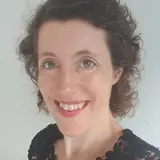
Matthia Andrea Karreman
Team Leader Brain Metastases
-

Sophie Heuer
Team Leader Tumor Microtubes in Glioblastoma
-

Salma Baig
-
Dr. Andres Flores Valle
Post-Doc
-

Calvin Thommek
PhD Student
-
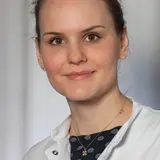
Dr. Christina Nürnberg
-
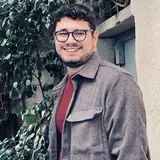
Luca Mangherini
-
Erinne Cherisse Ong
-
Chanté Desiree Mayer
-
Julia Mäurer
-
Susann Wendler
-
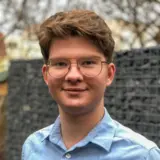
Nils Hebach
-
Niels Olshausen
-

Joana Schlag
-
Kirill Mironov
-

Luisa Kües
-

Melina Müller
-
Jonas Künzel
-

Judith Madelaine Rich
-

Lea Badura
-

Nico Horsak
Selected publications
Matthia A. Karreman and Frank Winkler
Monje, M., Winkler, F.
Messmer JM, Thommek C, Piechutta M, Venkataramani V, Wehner R, Westphal D, Schubert M, Mayer CD, Effern M, Berghoff AS, Hinze D, Helfrich I, Schadendorf D, Wick W, Hölzel M, Karreman MA*, Winkler F*.
Venkataramani V*, Karreman MA*, Nguyen LC, Tehranian C, Hebach N, Mayer CD, Meyer L, Mughal SS, Reifenberger R, Felsberg J, Köhrer K, Schubert MC, Westphal D, Breckwoldt MO, Brors B, Wick W, Kuner T#, Winkler F#.
Hausmann D, Hoffmann D C, Venkataramani V, Jung E, Horschitz S, Tetzlaff S K, Jabali A, Hai L, Kessler T, Azorín D D, Weil S, Kourtesakis A, Sievers P, Habel A, Breckwoldt M O, Karreman M A, Ratliff M, Messmer J M, Yang Y, Reyhan E, Wendler S, Löb C, Mayer C, Figarella K, Osswald M, Solecki G, Sahm F, Garaschuk O, Kuner T, Koch P, Schlesner M, Wick W and Winkler F.
Karreman MA, Bauer AT, Solecki G, Berghoff AS, Mayer CD, Frey K, Hebach N, Feinauer MJ, Schieber NL, Tehranian C, Mercier L, Singhal M, Venkataramani V, Schubert MC, Hinze D, Hölzel M, Helfrich I, Schadendorf D, Schneider SW, Westphal D, Augustin HG, Goetz JG, Schwab Y, Wick W, Winkler F.
Venkataramani V, Yang Y, Schubert MC, Reyhan E, Tetzlaff SK, Wißmann N, Botz M, Soyka SJ, Beretta CA, Pramatarov RL, Fankhauser L, Garofano L, Freudenberg A, Wagner J, Tanev DI, Ratliff M, Xie R, Kessler T, Hoffmann DC, Hai L, Dörflinger Y, Hoppe S, Yabo YA, Golebiewska A, Niclou SP, Sahm F, Lasorella A, Slowik M, Döring L, Iavarone A, Wick W, Kuner T*, Winkler F*
Venkataramani V, Tanev DI, Strahle C, Studier-Fischer A, Fankhauser L, Kessler T, Körber C, Kardorff M, Ratliff M, Xie R, Horstmann H, Messer M, Paik SP, Knabbe J, Sahm F, Kurz FT, Acikgöz AA, Herrmannsdörfer F, Agarwal A, Bergles DE, Chalmers A, Miletic H, Turcan S, Mawrin C, Hänggi D, Liu HK, Wick W, Winkler F*, Kuner T*.
Get in touch with us

Prof. Dr. Frank Winkler
Head of the Experimental Neurooncology Research Group & Managing Senior Physician, Department of Neurology University Hospital Heidelberg
